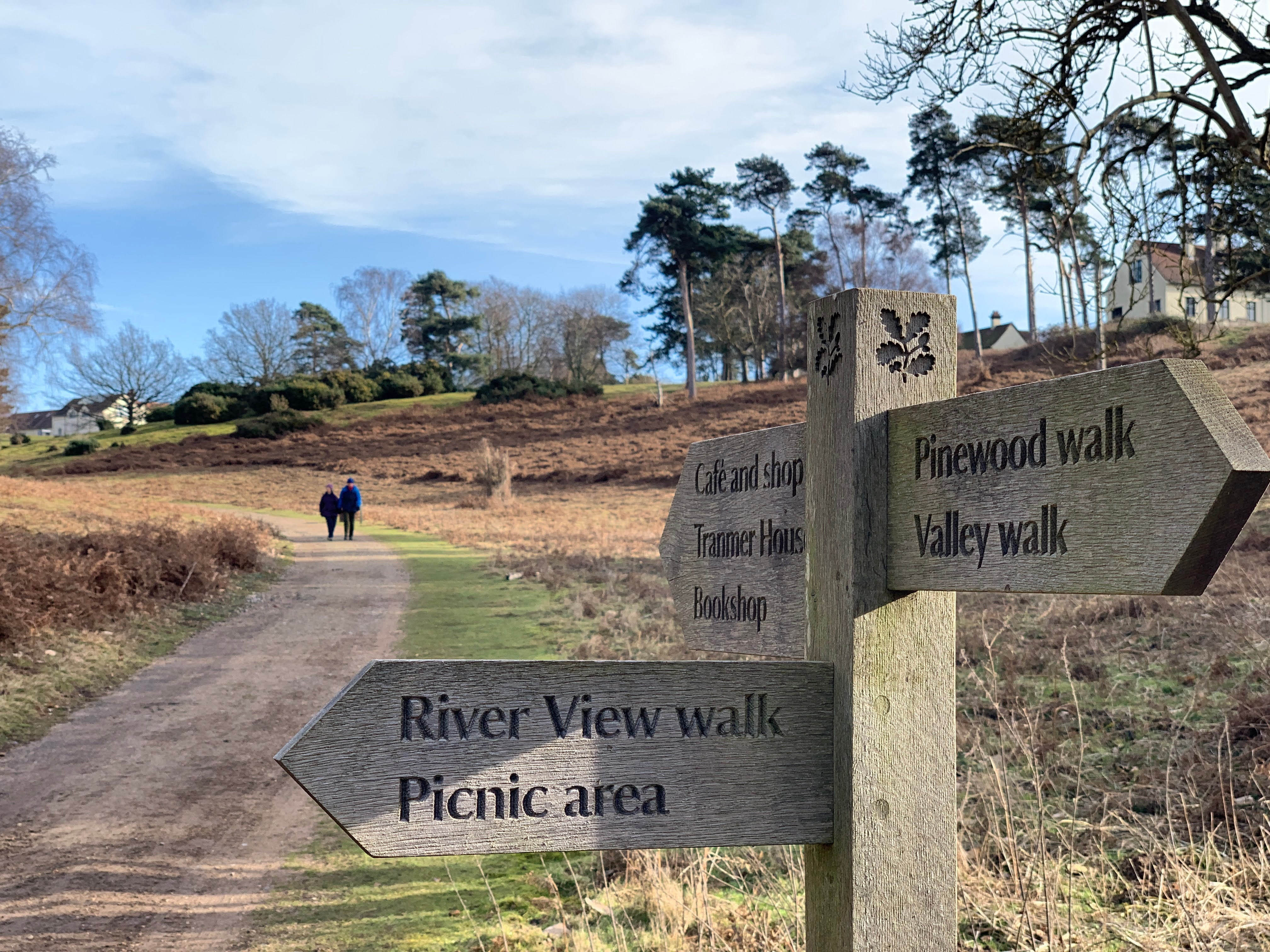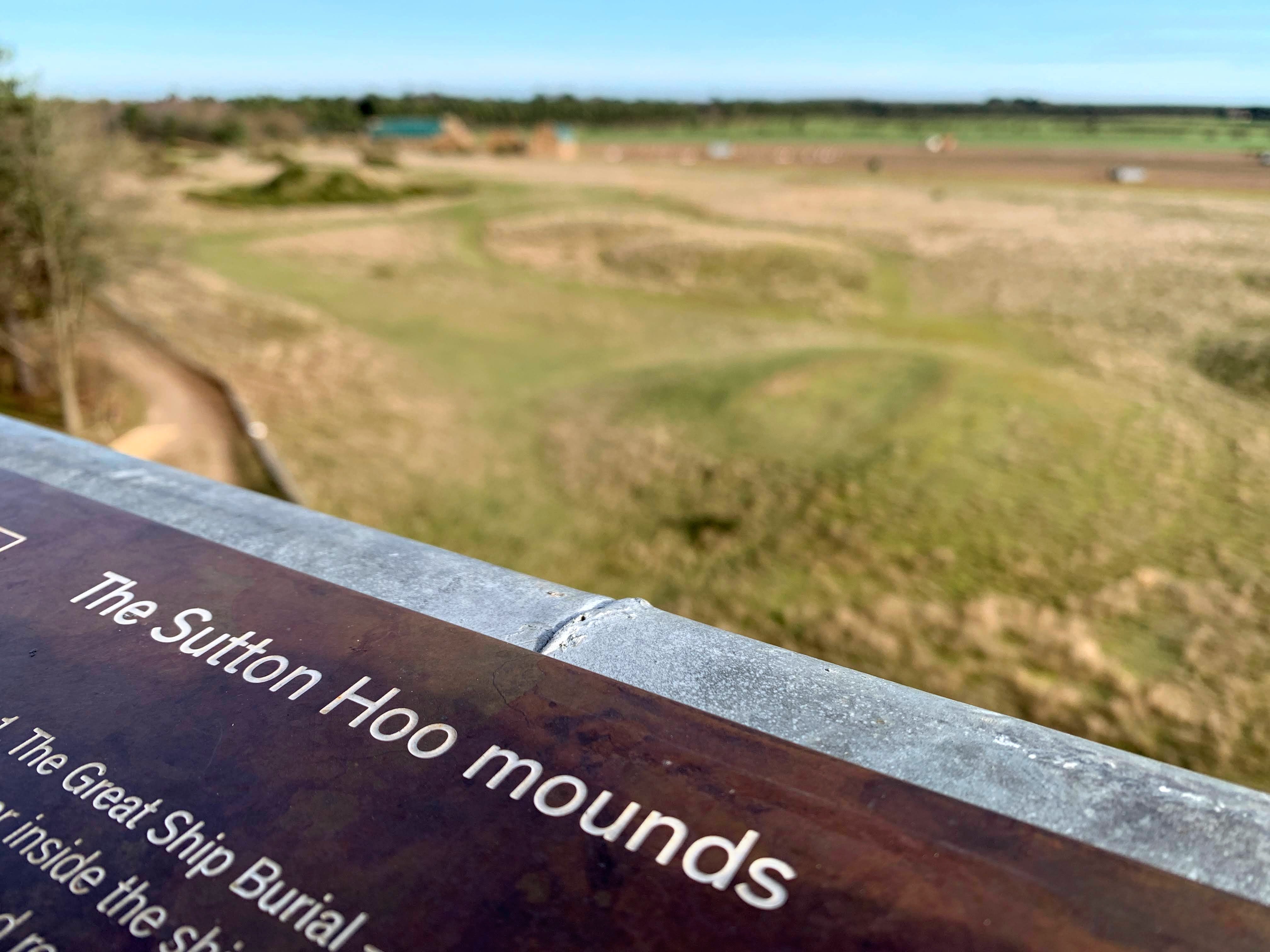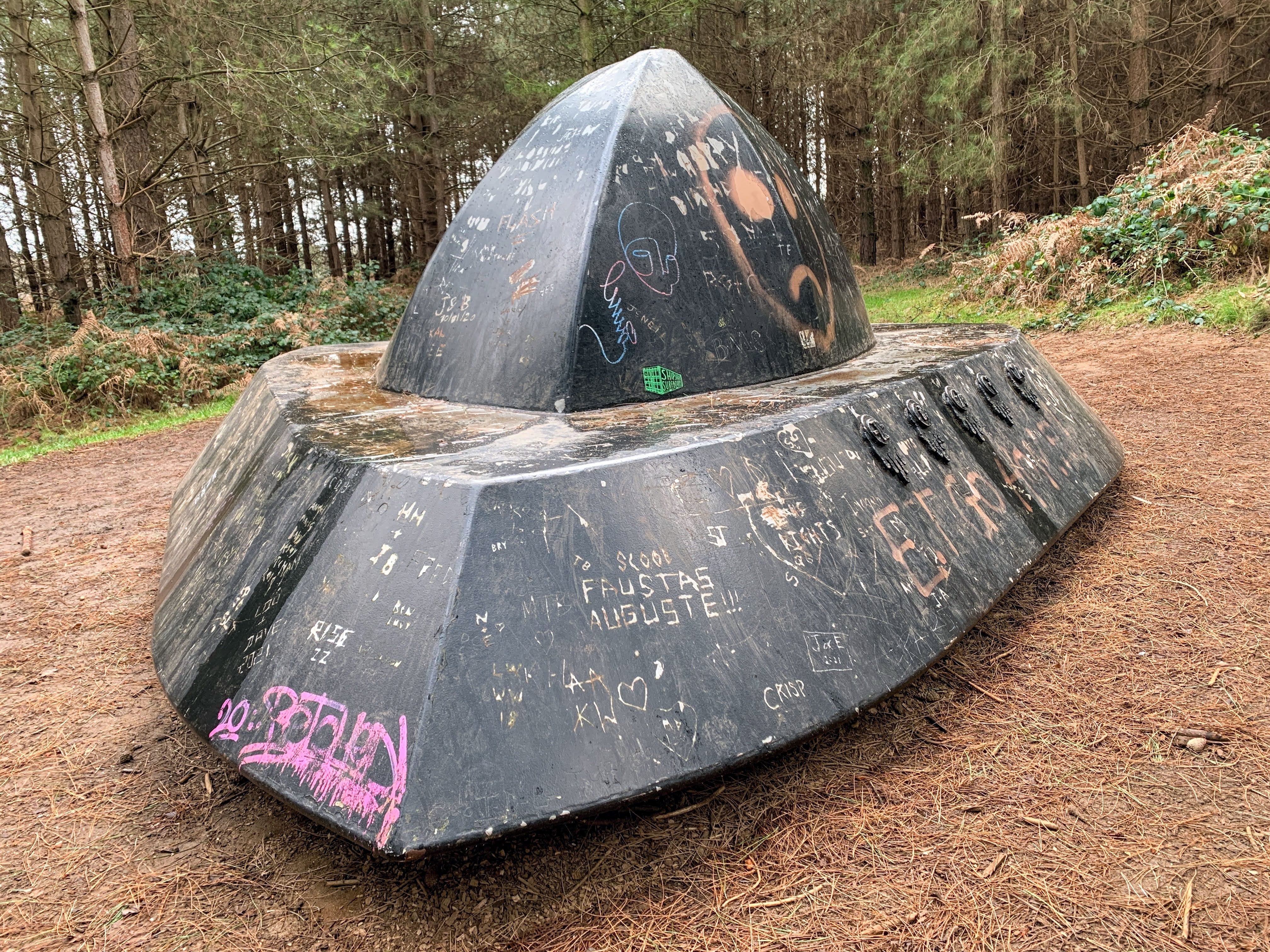
The field looked ordinary enough. Short-shorn stubble, scrawny hedgerows, undressed trees; the River Deben meandered silently to the side, while the square, flint tower of Rendlesham’s Church of St Gregory the Great poked up in the distance. But then low, winter sun cracked through gunmetal clouds, crows began to caw and a sharp gust blew away the centuries. I checked my map. Yes, this was it: had I been here 1,400 years ago, I’d have been hobnobbing with royalty.
Suffolk’s sleepy Deben Valley contains some big secrets. It’s where the Anglo-Saxon burial site of Sutton Hoo was found, one of the greatest archaeological discoveries of all time. More recently, the remains of a royal settlement were discovered at Rendlesham, four miles north – the biggest and wealthiest Anglo-Saxon site known in England to date. Given what’s already been found, it’s thought there are probably other burial grounds dotted along this river, earning it the nickname England’s Valley of the Kings. While 2022 marks the 100th anniversary of Howard Carter’s unearthing of Tutankhamun’s tomb, those who don’t manage to make it to Egypt should consider visiting the UK’s homegrown version instead.

It does take a little imagination to appreciate Rendlesham’s glories. But I was following the newly created “In the Footsteps of Kings” walking trail, which helped. Virtually scouring the terrain beforehand also made me alert to every bump and speckle – the astonishingly comprehensive Suffolk Heritage Explorer website maps every bit of known archaeology in the county, from the location of the Saxon kings’ great timber hall to spots where Roman coins have been found or where Second World War batteries once stood. This earth has many stories to tell.
As I hiked the new trail, a 14.5km route between Wickham Market and Melton train stations, I tried to listen to them. Alas, I was distracted by the ghostly twang of the wind through the telegraph wires, the sway of the reeds, the chuckle of fieldfares. It was a beautiful afternoon. The timber-framed houses of Ufford and its rural surrounds were bathed in a golden light that, by the time I decided to continue into Woodbridge, had turned bubble-gum pink.
The timber-framed houses of Ufford and its rural surrounds were bathed in a golden light that, by the time I decided to continue into Woodbridge, had turned bubble-gum pink
The stories were easier to interpret the next day, as I strolled from my room at the old Bull Inn – where archaeologists from the 1939 Sutton Hoo dig stayed – along the River Deben and round to Sutton Hoo itself. On a weekday in February, the museums were closed and the site virtually empty, but the walking trails were open, as was the viewing tower. Unveiled in September last year, the 17m-high larch-clad lookout tucks into a copse of Scots pine in front of the funerary mounds. At ground level, this momentous cemetery seems barely there. But gazing down from the tower, it makes more sense. You can see its relationship to the river, helping to explain why a ship came to be buried here. And you can appreciate the site’s long human history: people were farming here 3,000 years ago, long before the Anglo-Saxons arrived, and they continue to farm here now – just beyond the fence, a tractor laboured and pigs snuffled the bare soil.

It’s not all such ancient intrigue, though. One of the area’s most notorious mysteries is much more recent, dating back to 1980, when RAF Woodbridge – only a few miles east of the settlement of those ancient kings – was the biggest airbase in western Europe. On three consecutive nights in late December that year, US Air Force patrolmen saw unusual, unexplained lights winking outside the base, in the depths of Rendlesham Forest. It’s considered the UK’s most significant UFO incident.

In truth, you’re more likely to find Saxon gold than little green men – but that didn’t stop me following the forest’s UFO Trail. I bounded amid the pine and birch to peer through the old East Gate, from where the strange beams were first spotted; I passed the place where the patrolmen mysteriously began to lose radio contact; and I explored the supposed ‘alien landing site’, where a conical, metallic object allegedly floated above the ground before darting off, leaving broken treetops and triangular depressions in its wake. Now, the clearing is home to a spaceship sculpture, based on one of the patrolmen’s sketches and, to my eyes, slightly boat-shaped. I pondered what our descendants might make of it, should it end up somehow buried and then rediscovered in a 1,000-odd years…

I finished my exploring at the valley’s most recently recognised treasure. In January the Unruly Pig, a 16th-century red-brick inn near Woodbridge, was named the country’s top gastropub in the annual Estrella Damm list. It was with high hopes that I settled in beneath the oak beams and pop art – and it didn’t disappoint. Crisp, unctuous arancini and Mersea crab tonnarelli, with just the right sweetness and bite, were a treat. A lunch fit for a king.
Travel essentials
Staying there
The recently revamped 16th-century Bull Inn in Woodbridge has welcoming staff and great food; doubles from £109, B&B.
Eating there
The Unruly Pig pub in Bromeswell serves award-winning dishes; mains £13-30, set lunch £25 for three courses.
More information
Walks info, including a new app dedicated to walking trails, is available from Discover Suffolk. For archaeology maps, see heritage.suffolk.gov.uk/map.







